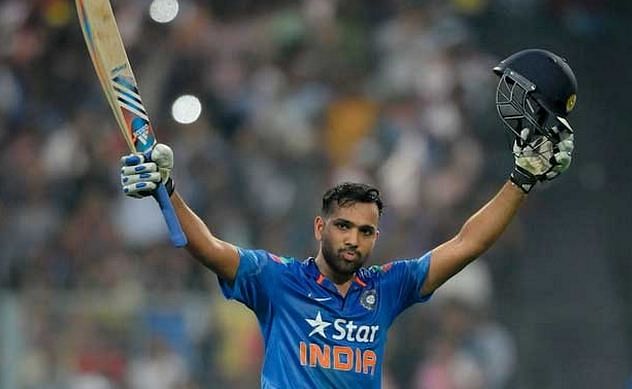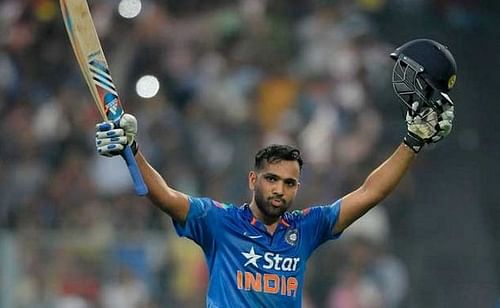
The dark side of Rohit Sharma's 264: Why the game needs balance between bat and ball

I woke up recently to see the news of Rohit Sharma's record-breaking double century making the headlines. Oh, well, the phrase 'waking up to headlines' sounds archaic now, but how I wish I can go back to that era when the balance between bat and ball was even.
I am not taking anything away from Rohit, for even in this era, it takes something to get to 264 in a One Day International (ODI) match. But then it was just stretching the madness a bit further. It was probably the first time when I wasn't excited by a landmark in cricket. Also, yes, thanks to the Board of Control for Cricket in India (BCCI), Ravi Shastri wasn't in the commentary box belting away cliches.
Now, does this mean that my love for the game is gone? Or does this mean 200 is no longer a landmark to be celebrated? Both seemed very scary prospects. This led to some introspection on how the game has transcended over time.
The game is more than one hundred years old, and the basic premise still remains the same – you score runs, take wickets and win games. As with any sport, we have had legends and the wonderful memories they have given us. Around all this, the game has evolved - grounds, rules, bats and what not. But recently, in the last decade, the mutation has been at breakneck speed.
Purists have raised a lot of hue and cry around this and called for heads to roll. From a generation where batsmen used to be admonished for hitting the ball in the air, here we are where the grinders are often the subject of memes on internet. Boom-Boom is preferred to Tuk-Tuk. I am all for evolution. The game has to change, which is inevitable. Few of these changes have been in the right direction, which has called for captains to flex their grey cells. Point of concern, though, is the balance.
Somewhere during the mid 80s we saw a shift between bat and ball. We saw pitches easing out and, as a result, high scores reached with ease. The arrival of one day cricket made the willow wielders more adventurous. Sadly, the recent advent of commercialism has made the rule makers follow the same path too. Thus, creating quite an abyss - smaller boundaries, bigger bats, two new balls in a game, and it goes on.
What do the numbers suggest?

In a data-frenzy age, we all look for numerical evidence, and so did I.
From 1900s till 2000s, in the purest format of the game – from Sydney Barnes to Harold Larwood to Malcolm Marshal up until the last set of greats to hang up their boots - the McGraths, Akrams et al. – the averages of the best in each generation have varied between 20-25.
The exceptions, those on the higher side of the average, are the tweakers – Lance Gibbs, Erapalli Prasanna, Shane Warne and Co. – who are prone to be hit for a few before luring the prey into their trap in a wizardly manner.
Knowingly exaggerating, there is only one freak of the nature on the lower side – the Bradman of bowling one can say – Sydney Francis Barnes.
This is five-six generations of evolution we are talking about. Step one generation further, and the averages suddenly jumps to 29 for even the best in the business.
With a cut-off of 100 wickets, only 4 people from this generation – against 8 in the last – qualify in that bucket!
Of course, this is only suggestive, as the greatness of a player cannot be encompassed by mere numbers. It sure is a cause for concern though. Probing further, this surely is not because of dearth of talent, for that would be inexplicable. Reasons aside, let’s try to comprehend what we are losing out in this course of evolution.
Every hero needs a villain
Think of all the mouth-watering battles, Sampras v Agassi, Batman v Joker, Lauda v Hunt, Tendulkar v Warne – we have always needed a worthy opponent to make us feel more passionate about the star we adore. To make us sit at the edge of the seat in awe as we watch the battle between equals, though in a different realm.
This game is in desperate need of such battles. Apart from Dale Steyn and probably Mitchell Johnson, on his day, one has to think hard to find a bowler who has been able to produce magic on the field with some degree of consistency.
We need bowlers who can instil fear in a batsman’s mind with their sheer presence. And, more importantly, we need to create an environment where such craftsmen can thrive. The runs made then become more meaningful and more enjoyable. For amongst the century of centuries by the Indian greats, the ones that are made in adversity are remembered the most.
We have witnessed a plethora of batting records fall. Five 400+ scores or a 434-run chase are not records to be proud of. It should, in fact, raise questions. Where are we heading to?
There has been enough said about big bats, smaller boundaries and the rules that change like the Brownian. It is high time the International Cricket Council (ICC) takes action, to bring in balance and thereby make the game more fair. The necessary reforms are beyond the scope of this article. This is a desperate cry for help from one of the million patrons of this lovely game.
All for the love of cricket!